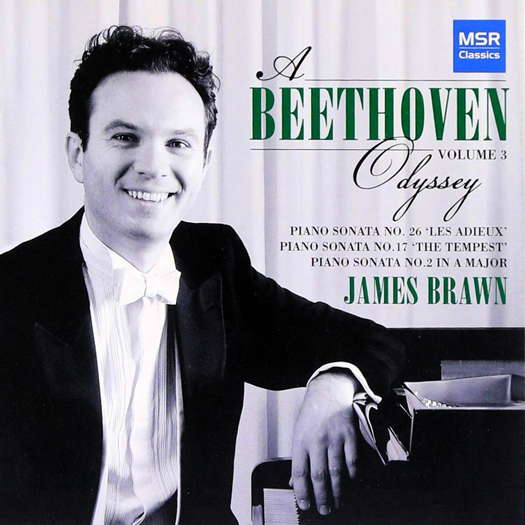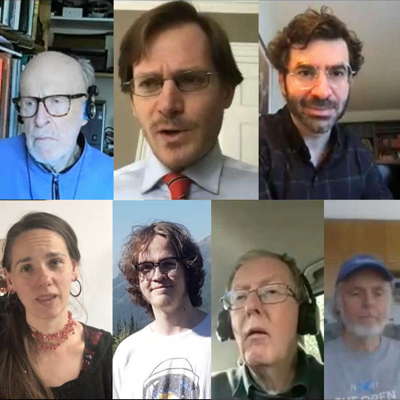 VIDEO PODCAST: John Dante Prevedini leads a discussion about Classical Music and Artificial Intelligence, including contributions from George Coulouris, Michael Stephen Brown, April Fredrick, Adrian Rumson and David Rain.
VIDEO PODCAST: John Dante Prevedini leads a discussion about Classical Music and Artificial Intelligence, including contributions from George Coulouris, Michael Stephen Brown, April Fredrick, Adrian Rumson and David Rain.
Unlocking Operatic Dimensions

JOHN DANTE PREVEDINI discusses 'Cesare, Child of Night' with composer Jonathan Beard and editor/director Stewart Schill
John Dante Prevedini: Jonathan and Stewart, the Cesare libretto portrays a world distinct from that of the original film in several key ways, including plot and character development. What role did you play, if any, in Michael Cramer's crafting of this world?
Jonathan Beard: While the words are Michael's, we definitely collaborated on the development of the story. Michael had completed a draft of the libretto before I'd started composing, and we were in a lot of communication about what the details of our plot should be. It went through some adjustments, and we sort of just felt it out as it got farther away from the distinct narrative of the film. It tells the same story as the film, but with a very different rhythm and focus. The biggest thing that we decided to do was hone in on the relationships between the characters and imagine some depth that may not have been in the original silent film. Our plot of the opera is quite streamlined and taut, but within the 35-minute piece, there is some luxuriating in the interpersonal relationships between our characters. The relationship of how Dr Caligari is manipulating Cesare, the relationship of Cesare to Jane, and the relationship of Jane to her two suitors, Alan and Francis — all of that is where we really decided to put the focus.
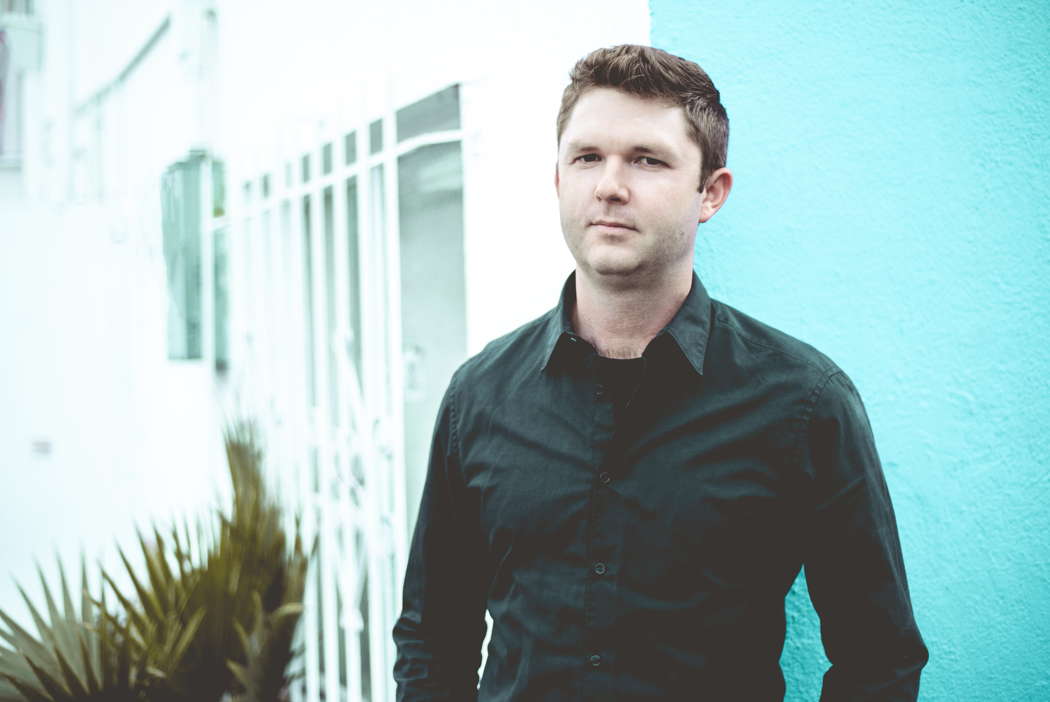
Jonathan Beard. Photo: Jennica Abrams
JDP: Jonathan, what was your process for organizing the compositional parameters in setting the libretto, such as harmony, rhythm, instrumentation, etc?
JB: Rule number one in the composition process was to serve the words in a way that vocally made sense for a singer. Beyond that, I gave thought to what the sound world should be for each of our three singing characters—aside from the narrator, there are only three characters in our story who actually sing. The approach I took was to give each of them a slightly different sound world that spread out across the electro-acoustic continuum. Cesare is served throughout by a blend of electronic and acoustic instruments, whereas Dr Caligari gets further into the electronic sound world: one of his arias is the only piece in the whole opera that is fully electronic. On the flip side though, when a certain plot twist happens, Dr Caligari also sings the only aria that is fully acoustic. So he's on the two extremes while Cesare is in the electro-acoustic direction with more electronic instrumentation, and Jane leans more acoustic with some electronics. In other words, Cesare is a mixture of both, leaning toward electronics. Jane is a mixture of both, leaning toward acoustics. Dr Caligari is a mixture of both at the extremes.
Stewart Schill: So is Caligari's arc from electric to acoustic reflected in his arc in the story?
JB: Somewhat. I wasn't plotting it out that obviously when I started doing the sound design, but it sort of ended up that way. He goes through the biggest transformation of all the characters, so that juxtaposition ended up working nicely.
JDP: Stewart, the visual world of Cesare reorders and repurposes many clips from the original film to tell this alternate version of the Caligari story. What was your process in selecting and reorganizing the clips for this purpose?
SS: It was a big challenge to illustrate the opera, which veered from the linear nature of the movie. My process was to give myself the freedom to deconstruct the movie and take a bit of a leap in that what you're seeing may not literally illustrate what you're hearing, but effectively it does. The guiding principle that Jonathan and I were following was that it didn't need to be literally true, but it needed to feel emotionally true. My approach was ad hoc in that I would approach each movement within the opera with whatever literal footage I had when the movie and the opera did line up clearly. In those instances, it became very evident how well the dramatic tone of the opera fit with the stylized acting of an old silent film. And then in other instances, I also had these very colorful, impressionistic paintings that Sadaf did, which I brought in as another element to cover the differential. Then it was really a process of experimentation, using whatever techniques and effects I could to make the visual experience align with the auditory experience. There wasn't really any precedent I had to go off of, so I really was carving my way through the frontier, but it was really gratifying, and I'm really pleased with how it all came together.
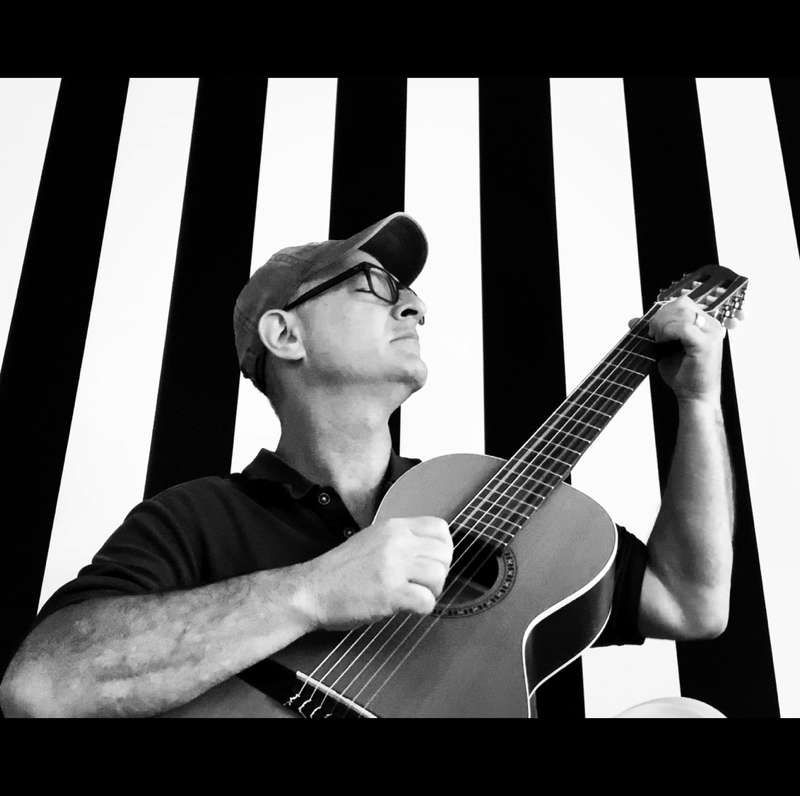
Stewart Schill
JDP: Jonathan and Stewart, do you envision Cesare in a live performance version someday? If so, how would elements of this current film version be incorporated and/or modified?
SS: For those who may not know, this was originally intended to be a stage production, but due to current events it ended up being in this film format. When Jonathan and I were working together on adapting the film, my question was always 'if this was on a stage, what would it look like?' It would be really interesting to see this produced as a stage play that possibly even uses clips from the movie in a different way.
JB: Potentially, we could do it that way, but you also have to consider how well your creation fits with the music as it is now.
SS: You'd probably have to let go of that, don't you think?
JB: Not necessarily, because there is precedence for doing semi-staged operatic work that incorporates long-form film. For example, LA opera has staged some productions like this over the last 10 years, where it's semi-staged almost like an oratorio, where the actors are onstage and may be in costume, but they aren't walking around and doing all the acting. There was an opera a few years back based on Dracula that was playing old clips of Christopher Lee footage with the performers live in front of the screen. Where we perhaps go a step further is that Stewart has created a new experiential film for this opera, not just cutting elements from the original story but repurposing it to create this emotionally true narrative. So that's a model that we could jump off from. But there are also other possibilities - I could imagine incorporating modern dance and choreography to create a truly multidisciplinary stage presentation.
SS: There are also sections in the opera that don't have an analog in the movie, and if you had that multimedia option where you could lean on different aspects, live or projected, you could really do something creative. I hope that you do a live version.
JB: That would be very cool. Stewart previously mentioned the necessity that we go in this film direction due to the world events of the pandemic, but earlier in the process, when we were discussing creative possibilities before Stewart came on board, we pondered some intriguing conceptual ideas like shadow work, puppetry, and choreographed movement in imagining how the characters who don't sing would be represented live on stage.
SS: It's funny because this started as a movie, then became an opera, then became a movie of the opera, and now it could become a stage show of the movie of the opera!
JDP: Jonathan, how did your vision for setting the libretto evolve over the course of the composition process? Were there any significant changes you had to make along the way?
JB: As I mentioned before, I was communicating with Michael Cramer a decent amount during the crafting of the libretto originally, but once I started composing, the main adjustments that we did had to do with narrowing things down. About ninety percent of it was figured out in advance, but there was some additional sculpting needed to get us to the story we wanted to tell. I think it's analogous in certain ways to the rough cuts to fine cuts to final cuts of a film, where there might just be a little more material than the flow of the story needs, and you have to figure out how to narrow that down. That continued to be a collaborative process as I started to compose.
SS: So you worked pretty closely with Michael Cramer in crafting the libretto. Did you guys sort of outline everything before he went off to write the actual dialogue or lyrics?
JB: Not to that degree. All the writing of the lyrics was him, but once we had the rough draft of the story we did go through some changes. The Cabinet of Dr Caligari is not an incredibly long film by modern standards, but it is quite rich with subplots and sides. If you took the whole script of the film, you could turn that into an eight-hour opera. So we were finding the story we wanted to tell within that greater tableau, and that's where Michael and I were collaborating.
SS: It was really interesting getting to know the film over the course of doing this project. When you think about the movie in 1920, putting that into context, it's such a brilliant and progressive film, and I'm sure there are so many unprecedented cinematic achievements in there. So I gained a lot of respect for the film.
JB: It's still even surprising and creates some paradoxes now. I'm just thinking how mind-blowing that would've been to experience 100 years ago. One way that evolution happened when Michael was crafting the libretto was that we found ourselves exploring the underdeveloped personalities and motivations in the film. Dr Caligari and his machinations are present in the original film, so we kept that. Both the characters of Cesare and Jane however, are less developed motivationally in the silent film, and we had a lot of fun imagining the possibilities for those characters of why they're doing what they're doing and how emotionally they may be responding to what's going on. The irony is that in the end, even with the deepening of motivations, everyone is still captured, shall we say, within the twist of the plot. I'm being vague for people who don't know the story because I don't want to spoil it, but in the end, Cesare sings a rage aria having to do with an inability to break free, and that was really fun to explore.
SS: I also don't think Dr Caligari's motivations in the original film are touched on with any depth at all. I think you guys really created a fascinating point of view for that character.
JDP: Stewart, how did you strategize your application of visual effects to clips from the original film, such as colorization, negative filters, symmetrical mirroring, etc?
SS: I'm a very experienced editor, so I'm very familiar with all of the tools at my disposal. I knew that given the challenge of this piece, I wanted to employ some effects, and I gave myself the freedom to manipulate the film and bend it to my own purposes, even with my respect for it. It was also sort of a born-out-of-necessity creative choice to manipulate the look of things and the speed because I had a limited amount of material to work with and knew that I'd be repeating images in different contexts. I did have one idea going in, based on the fact that the opera was an inherently theatrical piece. I felt that the movie should fit into that theatrical concept, so instead of the traditional cinematic view where you're just looking at an image within a screen, I wanted to create a more proscenium view to make it seem as though it were on stage. I played with ideas like splitting up the screen or using only part of the screen or having multiple images going to give the audience the choice of where to put their attention. All of that is theatrically-based, and I think it serves this project really well.
JB: It was really wonderful to see how Stewart's manipulation of time in certain places added not just a profound accompaniment to the music but also a deepening of the visual itself.
JDP: Jonathan and Stewart, what do you think is the most important thing for audiences to keep in mind when experiencing Cesare?
SS: The most important thing to keep in mind is that it's not exactly The Cabinet of Dr Caligari. This is a very different interpretation of the story, so approach it with an open mind. What I hope will be surprising to audiences that come in with an open mind is that it really touches on a lot of different colors and flavors. It is genuinely creepy and scary in a very modern sense. I'd say there are a couple legitimate scares in there. But there is also romance, and it really makes you think. It's expansive, so approach it with an open mind, and you'll be rewarded.
JB: I love that! I'd also say that something to keep in mind is the alchemy of inspiration coming from different places. As Stewart was alluding to, these aren't the same stories. The way that we've set this both musically and visually is not the way audiences might expect it to be set. But I really believe strongly in inviting people in, and I like to create spaces that allow people to discover something they wouldn't have necessarily thought they were interested in before. This piece musically reflects a number of my diverse tastes, influences and passions, and if it brings someone into opera who hasn't been particularly interested in opera before, that's exciting to me. It also gives opera aficionados the chance to hear certain electro-acoustic elements that they might not have expected. There are rhythmic ideas, groove-based ideas, and combinations of timbres or instrument choices that might not be expected. For example, having a toy piano combined with a pizzicato cello and a bass flute. That is a world in which I like to work and invite people to experience something just a touch unexpected, and through that I think we all grow. So, Stewart's point about an open mind is well-put, but it's also about having a chance to engage with a landscape that might have some unexpected and exciting surprises around certain corners.
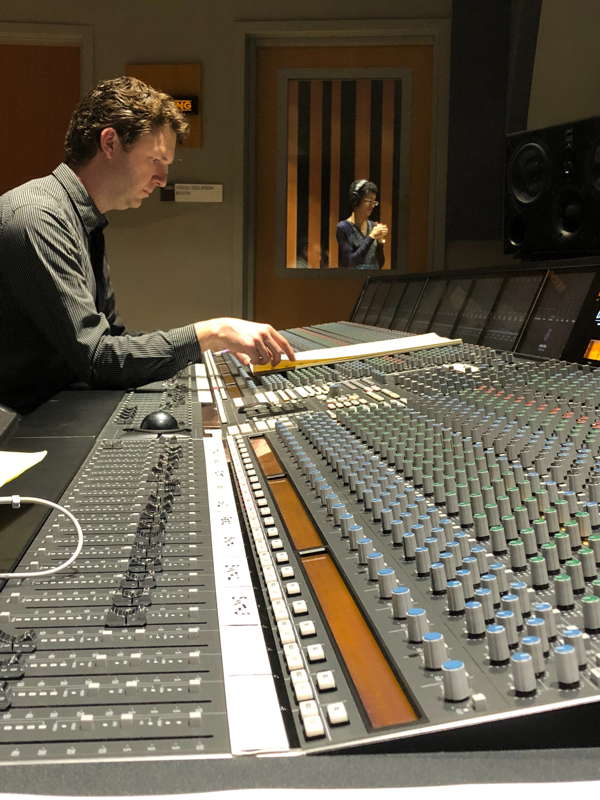
Jonathan Beard at the mixing board
JDP: Jonathan and Stewart, is there anything else you would like our readers to know about this opera?
SS: I am not particularly an opera aficionado, but I found this music both very accessible and very modern in the sense of how Jonathan uses sounds and electronic landscapes. It's very cinematic and has memorable melodies, and I found it a real joy as someone who's not coming from an opera purist point of view.
JB: This has been a real pleasure for all of us on the creative team to put together. We obviously faced some unexpected challenges with the pandemic, but we couldn't be happier with how the premiere has turned out and how this has come together. I feel immense gratitude to the other creatives who have joined me on this journey, Stewart being at the top of that list. I hope that viewers get to experience some of that delight themselves as they engage with the work.
Copyright © 27 November 2021
John Dante Prevedini,
Connecticut, USA

FURTHER INTERVIEWS, PROFILES AND TRIBUTES


